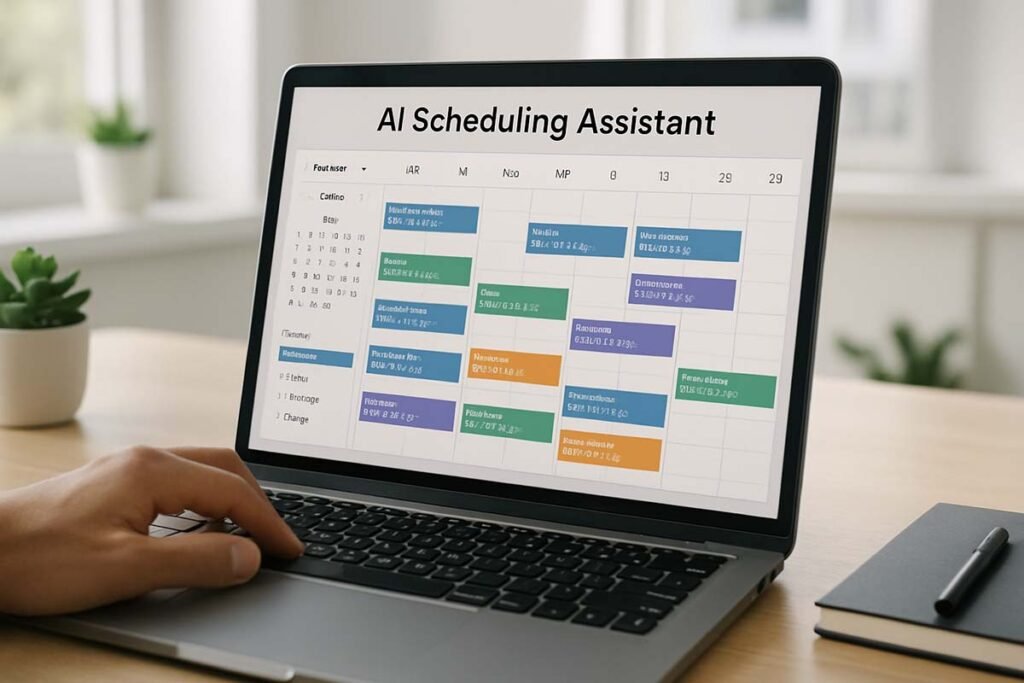The shift to remote work, accelerated by global events and evolving workforce expectations, has fundamentally changed how businesses operate across the United States. As virtual collaboration becomes the norm, artificial intelligence (AI) emerges as a vital enabler of productivity and seamless communication.
AI-powered tools are reshaping tasks from scheduling and virtual meetings to project management and performance tracking, helping teams stay connected and efficient regardless of location. However, challenges around privacy, adoption, and integration remain. This article explores how AI is transforming remote work and virtual collaboration post-2024, showcasing key technologies, real-life examples from US companies, and future trends.
The Remote Work Revolution in the US
Remote work is now a permanent fixture in many US industries, with millions of professionals balancing work-from-home and hybrid schedules. This shift demands new digital tools to maintain collaboration, engagement, and productivity.
Key AI Technologies Enhancing Remote Collaboration
AI Scheduling Assistants
AI-powered assistants like Microsoft Cortana and Google Assistant automate meeting scheduling by analyzing calendars, preferences, and priorities, reducing time-consuming back-and-forth emails.
Virtual Meeting Intelligence
AI tools transcribe meetings, identify key action items, and summarize discussions, enabling participants to focus on engagement rather than note-taking. Examples include Otter.ai and Zoom’s AI features.
AI-Driven Project Management
Platforms such as Asana and Monday.com use AI to optimize task allocation, predict project risks, and recommend resource adjustments, keeping distributed teams aligned.
Intelligent Communication Enhancements
Real-time language translation, sentiment analysis, and chatbot integrations within collaboration platforms help overcome language barriers and improve team dynamics.
Benefits of AI in Remote Work
- Increased productivity by automating repetitive tasks.
- Enhanced communication clarity and documentation.
- Better time management and resource optimization.
- Data-driven insights into team performance.
Real-Life Examples from the US
- Slack’s integration of AI features to streamline workflows and prioritize messages.
- IBM’s global teams leveraging AI to schedule across time zones efficiently.
- Startups using AI chatbots to support remote customer service.
Challenges and Considerations
- Privacy concerns with AI monitoring and data collection.
- Adoption hurdles due to varying tech proficiency.
- Integration complexities across existing tools.
- Need for human oversight to interpret AI-generated insights.
Future Trends in AI-Enabled Remote Work
- Virtual and augmented reality (VR/AR) combined with AI for immersive collaboration.
- Advanced emotion recognition to enhance remote team wellbeing.
- AI-driven career development and personalized remote work coaching.

AI is a powerful catalyst in the evolution of remote work and virtual collaboration, enabling US businesses and professionals to overcome distance barriers and enhance efficiency. While challenges remain around privacy and adoption, the continued integration of AI technologies promises richer, more connected, and productive virtual workplaces. Embracing these AI-driven tools today is key for organizations aiming to thrive in the dynamic post-2024 workforce.
👉 Explore AI-powered collaboration tools now to boost your remote work productivity and foster stronger virtual team connections.
FAQs
Q1: How is AI changing remote work in the US?
A1: AI automates scheduling, enhances virtual meetings, assists in project management, and improves communication, enabling more efficient and connected remote teams.
Q2: What are popular AI tools for virtual collaboration?
A2: Tools like Microsoft Cortana, Google Assistant, Otter.ai, Slack, Asana, and Monday.com integrate AI features to boost remote work productivity.
Q3: What challenges does AI face in remote work settings?
A3: Privacy concerns, varying user tech proficiency, tool integration hurdles, and the need for human oversight are common challenges.
Q4: Can AI improve productivity for remote teams?
A4: Yes, by automating repetitive tasks, optimizing schedules, and providing actionable insights, AI significantly enhances remote team productivity.
Q5: What future AI trends will impact remote work?
A5: Emerging AI applications include VR/AR collaboration, emotion recognition, and personalized remote work coaching.




Pingback: Ethical AI in 2025: Balancing Innovation with Responsibility for US Businesses - FirstsPost
Pingback: Preparing Your Small Business for AI: Practical Integration Tips for US Entrepreneurs - FirstsPost